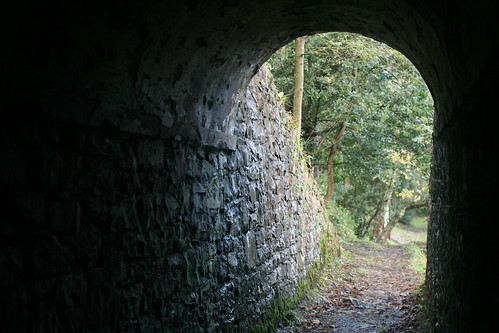OK Cupid uses big data to map who’s gay curious in the U.S. and Canada
Edmond Chang’s keynote talk on gamification for THATCamp Boise State
OK Cupid uses big data to map who’s gay curious in the U.S. and Canada
Edmond Chang’s keynote talk on gamification for THATCamp Boise State
Claim your topic in the comments!
Today, I want you to think about how the readings about place this week might inform or influence your upcoming assignments for this class: the grant proposal, the Boise Wiki article (undergraduates only), and the augmented reality project.
Some questions to consider:
1. Following Lewis’s example of the monument and bungalows, do you anticipate highlighting any tensions in the places you are interpreting? If so, how will you use those tensions in making your arguments about a place?
2. Which of Henderson’s “four dominant discourses on landscape”—landscape as landschaft, landscape as social space, the epistemological landscape, and the apocryphal landscape—will inform your projects?
3. Will the historical interpretation in your projects lean more in the positive or normative direction?
4. Hillier’s chapter on redlining in Philadelphia describes patterns of lending to home buyers and concludes that mid-twentieth-century redlining “is a more complicated process than many historians have appreciated” rather than a story of racial discrimination (88). Still, her essay has relevance to home-buying and mortgage-lending issues today. Will social justice, or at least informing ongoing policy discussions, be a guiding principle or goal of your project?
5. Beveridge’s essay on immigration, ethnicity, and race in New York highlights how GIS showed that although metropolitan New York is growing more culturally and racially diverse, it is also more segregated than ever. If you’re proposing to use GIS in your grant proposal, what concepts or phenomena do you hope it will similarly clarify?
6. Cunfer’s piece on the Dust Bowl contests the common conception that human activities were the primary cause of dust storms in the 1930s. Do you expect your project to disabuse historians and others of common misconceptions? If so, how will you make your case sufficiently strong to change people’s minds about what they think they know?
7. Fiege argues that historians and others studying the western U.S. must consider the intersection of private property and nature, both in terms of their physical presence (e.g., fences, cultivated fields, water, wildlife) and cultural beliefs (e.g. sanctity of private property, ideas about wildlife management). How might a consideration of the ecological commons influence your project’s interpretation of a place or phenomenon?
8. Cunfer’s and Pearson and Collier’s chapters in Past Time, Past Place and Fiege’s chapter in Everyday America draw on both environmental and cultural data and history. Would such a synthesis benefit your project? Why or why not? What kinds of data and evidence are you going to use, and how are you planning to synthesize them into a coherent project?
9. Sewell shows how, despite attempts to create separately gendered spaces (offices and department stores, for example), the reality of gendered interaction in downtown San Francisco, especially at street level, was more complicated. How is your ongoing work on your project balancing the analysis of geographical or architectural space with research into the actual historical interaction among people in that space?
10. Rojas takes an environment that is familiar to him—the streets and yards of East Los Angeles—and makes them comprehensible to readers who might find the spaces and interactions foreign or even (at first glance) undesirable. How does your project make comprehensible and interesting a concept, phenomenon, or place people might find unfamiliar, uninteresting, or even strange?
1. In what ways do buildings and landscapes have a history? How is that history useful to us as people living in the landscape? As historians, what tactics can we use to make that history more visible?
2. Do you agree with Lewis’s assertion that “the American educational system, both formal and informal, actively discourages the act of looking and thinking about what one sees” (93-94)? Give some examples from your own experiences as a learner and/or teacher.
3. Do you agree with Lewis’s argument that the war monument and the California bungalows in Bellefonte represent social and cultural tensions? Explain your answer.
4. Explain in your own words Henderson’s “four dominant discourses on landscape”: landscape as landschaft, landscape as social space, the epistemological landscape, and the apocryphal landscape. Towards which discourse(s) do you lean philosophically and in your own research and writing?
5. What is the difference between a positive modality and a normative one? How might a normative discourse lead to a different kind of landscape analysis or history than a positive one?
6. Henderson writes, “If landscape was to be about not only surfaces, but also alertness to social structure, and to fairness and justice, [J. B.] Jackson reminded us it would also have to be about questioning how far the study of landscape can take us and how landscape could be redefined in terms of concern with social and economic justice” (197) Do you think historical interpretations of a landscape ought to be deployed in the service of social justice? Why or why not? If so, for whom and by whom?
7. Is landscape study a good way to learn history? Why or why not?
Suggest a cross-sectional drive through Boise that makes an argument about Boise’s historical development, following the rules laid out by Grady Clay on pages 120-122. As you do, keep in mind Timothy Davis’s essay on the American highway landscape and the importance of the car, as well as “other-directed architecture,” in the physical and economic development of a city. In a blog post, map or describe your cross-section, then explain what argument your cross-section makes, and why you chose the route you did. (Hint: for mapping, if you have a laptop or tablet, you can use Gmap Pedometer, take a screenshot, and upload it to your post.)
1. In the examples in Past Time, Past Place, how did using GIS change researchers’ interpretation of historical data or cultural resources ?
2. In what specific ways can GIS aid in interpretation of historic sites for the public? What might be some liabilities of asking the public to use GIS or GPS as they try to understand a historic site?
3. GIS is often praised by historians as a way to make visible historical trends that otherwise might have been missed. Are there ways that GIS might obfuscate instead of enlighten?
4. Imagine you were assigned to interpret the “urban renewal” of downtown Boise in the 1970s for a public audience. Which approach is more interesting to your group: using GIS to recreate that pre-demolition landscape as a 3D visualization, or using GIS data layers to try to explain the causes and effects of this particular urban redevelopment? Explain your answer.
National Historical Geographic Information System: “The National Historical Geographic Information System (NHGIS) provides, free of charge, aggregate census data and GIS-compatible boundary files for the United States between 1790 and 2010.”
The New York City Historical GIS Project
Digital Humanities GIS Projects
Round 1:
Round 2:
Aurasma Lite at the Boise Zoo:
1. What are the varieties of augmented reality? How does AR differ from virtual reality?
2. In your estimation, what counts as AR and what doesn’t? Provide an example of one project (historical or otherwise) that you consider great AR, and one that is called AR but doesn’t quite fit your definition of it.
3. Find three examples of what appear to be exemplary implementations of AR in the cultural heritage space. Why do you find them so strong? What do they have in common? What are the advantages and liabilities of AR for historical interpretation?
4. What aspects of the Boise landscape are most ripe for AR interpretation, and why?
5. Explore one type of technology you might use to create a small AR project or tour for Boise. Figure out the steps necessary to complete a project.
Bembeneck’s post on spatial storytelling generated an interesting discussions in the comments about the differences between, and utility of, time and space/place to storytelling. Today we’re going to explore the ways time and space interact in public history projects in the digital realm, and we’re going to dip our toes into the waters of gaming.
Your mission for today is to propose, and then describe in a blog post, a digital game through which people learn about the San Francisco earthquake and fire of 1906. In keeping with the reading for today, think about whether space or time might be a better organizing principle or driving force for a game about the earthquake and fire (and their aftermath).
In your blog post, consider the roles of space/place and time in your game. In what ways did you consider space and time in your game planning? Which is more important to the gameplay, and why?
Some resources on the twin disasters and their effects:
“Patient Zero” from Radiolab
Michael Widner’s visualization and analysis of your digital humanist interviews
Shawn Graham continues the conversation with the ur-text from his interview with HannaLore
A screenshot from Twitter:
1. How do the first 10 minutes of the Radiolab episode use the elements of storytelling described by Alexander? What makes this particular “Patient Zero” story compelling? What, if anything, do you find distracting?
2. Revisit Alexander’s description of the quintet of images “Farm to Food.” He notes the skills necessary to assemble the series: visual literacy, remixing, archival competence. What skills are necessary to interpret the series? What skills can historians assume their various audiences will bring to such an assemblage?
3. How much, and in what circumstances, should historians let viewers construct their own narratives from a collection of primary sources? What are the advantages and liabilities of allowing (or encouraging) viewers to craft their own narratives or interpretations of sources? And how might digital tools allow historians to offer a spectrum of (easier through more challenging) interpretive options to viewers of a single project?
a Five Card Flickr story created by Leslie’s digital history class

flickr photo by cogdogblog

flickr photo by Serenae

flickr photo by hummingcrow

flickr photo by Serenae

flickr photo by Intrepid Flame
Uncle Cletis was sitting around playing his banjo, when the Red Hot Chili Peppers and Modest Mouse showed up. They warned him of the impending alien invasion and apocalypse, so they took shelter in the tunnel. Alas, they all died anyway, there in Meteor City.
1. According to Alexander, what are some of the key aspects of good storytelling?
2. How do digital media alter the practice of storytelling? In what ways are analog and digital storytelling the same?
3. Alexander names some venues for storytelling that most of us wouldn’t necessarily think of immediately when asked what constitutes a story—marketing campaigns and Nigerian e-mail scams, for example. In what other contexts do you come across stories in your everyday lives?
4. How might historians use these contexts to bring history to people’s everyday lives?
1. Play Five Card Flickr two or three times.
2. Explore Alan Levine’s 50+ Ways to Tell a Story, and consider which media or platform might be the best way to expand upon one of the stories you created in Five Card Flickr. Which of these platforms might work especially well for historians looking to engage the public, and why?
Copyright © 2025 · Minimum Theme on Genesis Framework · WordPress · Log in